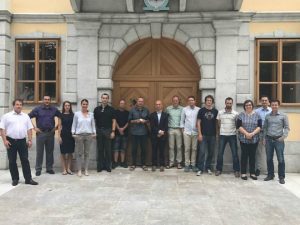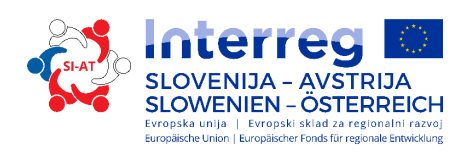The program area is currently facing high capacity fragmentation for research and innovation (R&I). Most of the companies from the peripheral area are therefore not accessing the R&I infrastructure, lack in innovation and are limited in the scope of added value growth. This particularly applies to the area of advanced material engineering for industrial applications. Despite the diversity of the potential market for products based on functional materials (energy storage, electronics, pharmaceuticals, the aeronautical industry, etc.), the companies in the peripheral area are unable to effectively utilize all the advantages of the available R&I infrastructure to develop new products.
The RETINA project is faced with a unique challenge of building a network of established laboratories with experience in the materials science and thus enabling research centers as well as companies of all sizes access to the research network via the “single entry point”. This will increase the chances of reaching critical mass for the R&I software in the program area, encourage companies to invest into R&I and therefore contribute to increased competitiveness of under-developed regions.

The project’s main results will be presented in the form of information events, laboratory visits, pioneering operations carried out in cooperation with the industry and the research centers, and feedback to local authorities. In order to maximize the project’s effect, the above-mentioned activities will be targeted at different groups (scientific partners, knowledge brokers, the industry and decision-makers). Due to the high fragmentation of the R&I infrastructure in the field of materials science, companies on the regional as well as the national level are unable to achieve their project goals, which makes the cross-border initiative essential for the successful implementation of the proposed project. This initiative’s distinctive feature is the interregional network providing access to the research equipment via the “single entry point“, as other similar initiatives have a more local focus.
PIONEERING OPERATION 1: Photovoltaic materials
The theme of the first project is the construction and analysis of new photovoltaic materials with the goal of developing a new generation of photocells. The project consists of two complementary subprojects each focusing on its own research material. The first subproject will be aimed at researching bismuth perovskites and CuInS2 nano crystals in the presence of organic ligands. The second sub-project will focus on photovoltaic materials surrounded by a polymer.
PIONEERING OPERATION 2: Organic electronic devices
Exploring the structure of transistors with a thin organic film. Si/SiO2 PDIF-CN2, C8BTBT, P3HT or an NFA compound was suggested as the organic semiconductor. In order to optimize the mobility of the charge carriers, the film morphology as well as the contact between the organic semiconductor and the dielectric will have to be adapted. The latter will be carried out by functionalizing the SiO2 surface with photoactive material sensitive to UV-light, which may change the polarity of the surface.
PIONEERING OPERATION 3: Functional glue
The project’s main objective is to determine how the composition of the adhesive resin in composites in electronic devices changes with time and due to oxidation.



